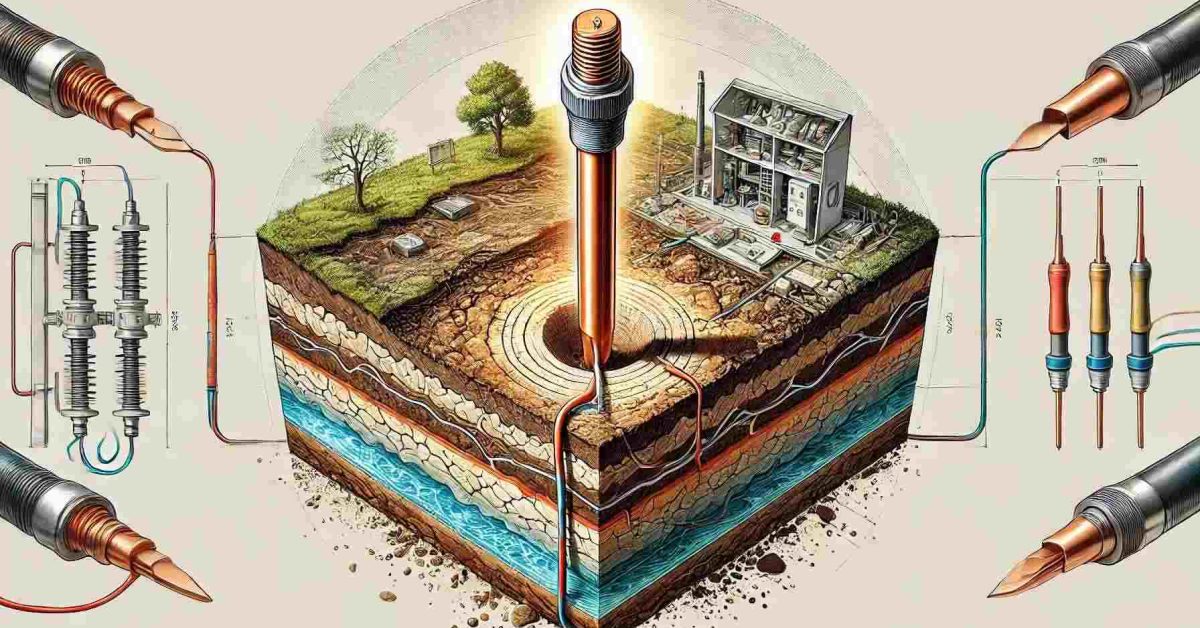In electrical systems, ensuring safety and proper functioning is of utmost importance. One crucial aspect in this regard is the earth electrode resistance. Understanding what it is, its significance, and how to measure it is essential for maintaining electrical safety. This article aims to provide a comprehensive overview of earth electrode resistance, shedding light on its definition, importance, measurement techniques, and ways to improve it.
Definition of Earth Electrode Resistance
Earth electrode resistance refers to the resistance encountered by electrical current when it passes through the earth via an electrode. An earth electrode is a conductive element, such as a metal rod or plate, which is buried in the ground and connected to an electrical system. The resistance value indicates how effectively the electrode dissipates electrical energy into the earth.
Importance of Earth Electrode Resistance
Proper earthing is crucial for various reasons, including electrical safety, equipment protection, and efficient operation of electrical systems. The significance of earth electrode resistance can be summarized as follows:
Electrical Safety:
Earth electrode resistance plays a vital role in diverting fault currents into the ground, ensuring the safety of individuals and preventing electrical hazards.
Equipment Protection:
By providing a low-resistance path to the ground, earth electrodes protect electrical equipment from overvoltages, fault currents, and lightning strikes.
Grounding System Performance:
An optimal earth electrode resistance helps maintain the integrity and efficiency of grounding systems, ensuring stable voltage references and reducing electrical noise.
Compliance with Regulations:
Adhering to prescribed earth electrode resistance limits ensures compliance with electrical safety standards and regulations.
Factors Affecting Earth Electrode Resistance
Several factors influence the resistance value of an earth electrode. Understanding these factors helps in designing effective grounding systems. The main factors include:
Soil Resistivity:
The resistivity of the soil in which the earth electrode is buried significantly affects its resistance. Soil composition, moisture content, and temperature influence the resistivity.
Electrode Material and Design:
The material and dimensions of the electrode impact its resistance. Factors such as electrode length, diameter, and surface area in contact with the soil determine the overall resistance value.
Depth of Burial:
The depth at which the electrode is buried affects its resistance. Deeper burial can reduce resistance by accessing lower-resistivity soil layers.
Adjacent Structures:
Proximity to other conductive structures, such as pipes or foundations, can alter the resistance value.
So, you’re looking for an testing of earth resistance right? Look no further. Quality Calibration Solution is at your service. Contact here.
Measurement of Earth Electrode Resistance
Accurate measurement of earth electrode resistance is essential for assessing the effectiveness of grounding systems. Several methods are commonly used for this purpose:
Fall-of-Potential Method:
This widely used method involves measuring the voltage drop between the earth electrode and a remote auxiliary electrode while passing a known current through them. The resistance is calculated using Ohm’s law.
Earth Tester Instruments:
Specialized instruments, such as earth testers or ground resistance testers, are available for accurately measuring earth electrode resistance. These devices utilize various techniques, including the fall-of-potential method, to provide precise resistance readings.
Clamp-on Earth Resistance Testers:
These portable instruments clamp around the earth electrode or grounding conductor without the need for disconnecting them. They measure resistance by inducing an AC current and measuring the voltage drop.
Techniques for Improving Earth Electrode Resistance
In situations where the measured earth electrode resistance is higher than desired, several techniques can be employed to improve it:
Increasing Electrode Length: A longer electrode increases the contact area with the soil, reducing resistance.
Adding Multiple Electrodes: Installing additional earth electrodes in parallel improves the overall resistance and enhances grounding system performance.
Enhancing Soil Conductivity: Treating the surrounding soil with compounds or additives that improve conductivity can reduce resistance.
Using Chemical Electrodes: Chemical electrodes, such as copper sulfate electrodes, provide lower resistance compared to conventional metal electrodes.
Periodic Maintenance: Regular inspection and maintenance of the grounding system, including cleaning, reburial, and corrosion prevention, help maintain optimal resistance values.
Conclusion
Earth electrode resistance plays a crucial role in ensuring electrical safety, protecting equipment, and maintaining efficient grounding systems. By understanding its definition, importance, measurement techniques, and improvement methods, individuals and organizations can take appropriate measures to optimize their grounding systems. Regular monitoring, maintenance, and adherence to relevant standards are key to achieving effective earth electrode resistance and mitigating electrical risks.
Frequently Asked Questions (FAQs)
Why is earth electrode resistance important in electrical systems?
Earth electrode resistance is important as it ensures electrical safety, protects equipment, and maintains stable grounding systems. It diverts fault currents, dissipates excess energy, and provides a reference point for voltage stability.
Can soil composition affect earth electrode resistance?
Yes, soil composition significantly affects earth electrode resistance. Different types of soil have varying resistivity, which directly impacts the overall resistance value of the electrode.
How is earth electrode resistance measured?
Earth electrode resistance can be measured using techniques such as the fall-of-potential method, specialized earth tester instruments, or clamp-on earth resistance testers. These methods provide accurate resistance readings.
What are some common factors that affect earth electrode resistance?
Factors such as soil resistivity, electrode material and design, depth of burial, and proximity to other conductive structures can influence earth electrode resistance.
What can be done to improve earth electrode resistance?
Techniques for improving earth electrode resistance include increasing electrode length, adding multiple electrodes, enhancing soil conductivity, using chemical electrodes, and performing regular maintenance on the grounding system.

Md. Hasan Ibrahim is a Technical Manager at Quality Calibration with extensive experience in the calibration sector since 2015. Holding a Bachelor of Science degree in Mechanical Engineering from Khulna University of Engineering & Technology (KUET), he has received training from various national and international organizations including CSIR-CMERI, QSI, BAB, NML-BSTI, memmert, and X-rite. With expertise in ISO/IEC 17025 assessment, method validation, metrological traceability, and uncertainty, he has successfully completed numerous calibration projects across diverse industries such as pharmaceuticals, food & beverage, oil & gas, textiles & garments, power plants, batteries, chemicals, hospitals & healthcare, and private universities.






1 Comment
Johnson Mugabi
It’s been a satisfying information to my need